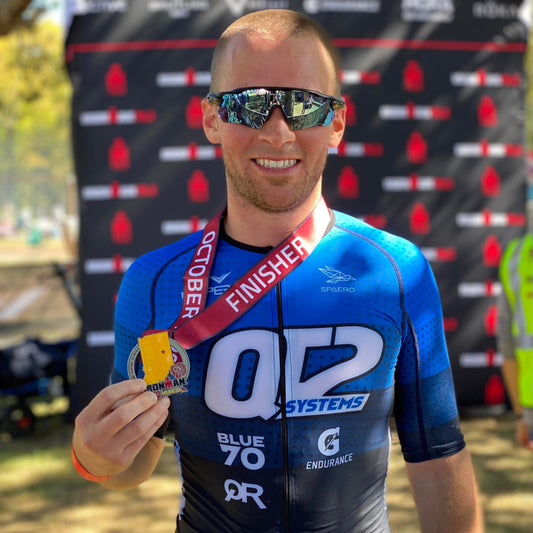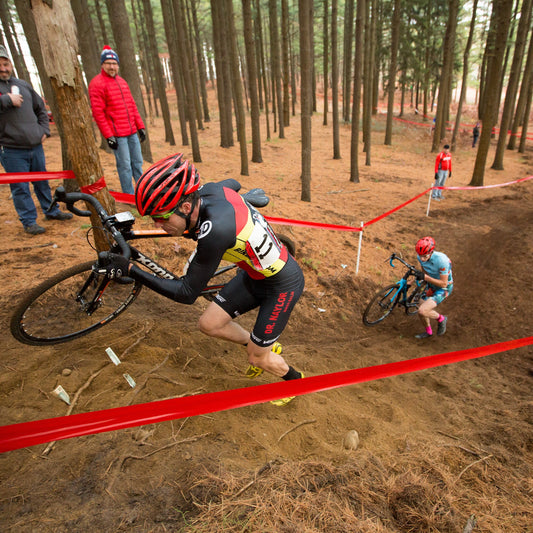Overview:
The Adaptive Explorer is naturally curious, adventurous, and thrives on variety. They are highly adaptable, love new challenges, and enjoy experimentation in training. However, they may struggle with consistency, routine, and focus, making it essential to provide them with structure without making them feel trapped.
Key Characteristics of the Adaptive Explorer:
✅ Loves variety and new experiences
✅ Enjoys problem-solving and experimentation
✅ Thrives in dynamic, ever-changing environments
✅ Can pivot quickly when plans change
✅ Enjoys the process as much as the outcome
⚠️ Struggles with sticking to long-term structure
⚠️ May lose interest in repetitive training
⚠️ Can get distracted by too many new ideas
⚠️ May resist rigid schedules
Strategies to Get the Most Out of an Adaptive Explorer
1. Build Flexibility into the Training Plan
🔹 Give them choices within structure – Instead of prescribing a rigid weekly plan, offer options (e.g., “Today’s key session: intervals on the bike or a tempo run—your choice”).
🔹 Introduce variability – Switch up terrain, training locations, or even workout formats.
🔹 Use theme-based cycles – Instead of a monotonous progression, use “focus blocks” (e.g., 4 weeks of technical running, then 4 weeks of power-based cycling).
🔹 Allow room for spontaneous workouts – If they want to jump into a trail race or an adventure ride, find a way to incorporate it rather than shutting it down.
2. Keep Them Engaged with Novelty & Challenges
🔹 Introduce gamification – Use Strava segments, Zwift races, or challenges like “run every street in your city” to keep things interesting.
🔹 Experiment with different training styles – Adaptive Explorers love variety, so integrate different training methods (e.g., a HIIT week, a power-based training block, or a technique-focused cycle).
🔹 Incorporate adventure elements – Encourage open-water swimming, trail running, or new cycling routes to keep motivation high.
🔹 Use periodic “wildcard” sessions – Let them choose one training day per week where they can do whatever they want (as long as it fits their overall progression).
3. Help Them Stay Focused & Committed
🔹 Set short-term, exciting goals – Instead of fixating on one distant race, use mini-goals along the way (e.g., “Let’s target a strong 5K time in 4 weeks before moving into the next phase”).
🔹 Frame consistency as a way to unlock adventure – Show them that sticking to key workouts will enable them to explore more (e.g., “If we nail these structured sessions, your long weekend adventure run will feel even better”).
🔹 Use variety strategically, not randomly – Their tendency to bounce between ideas can be useful if guided intentionally. Use variety within a structured progression rather than allowing them to train aimlessly.
4. Reinforce Progress Without Stifling Creativity
🔹 Showcase progress in different ways – Instead of just tracking metrics (which might not always excite them), reflect on how they feel, move, and experience training over time.
🔹 Keep feedback dynamic – Avoid rigid “pass/fail” feedback. Instead of “You missed the pace,” say:
- ✅ “Your pacing is improving, let’s keep refining it!”
- ✅ “You handled that terrain adjustment really well—let’s build on that next time.”
🔹 Balance performance goals with exploration – They might not be motivated purely by time goals, so use process-oriented goals: - ✅ “Let’s focus on smooth pacing today.”
- ✅ “See if you can maintain flow through technical sections of the run.”
What to Avoid When Coaching an Adaptive Explorer
🚫 Overly rigid structure – If you dictate every session without room for choice, they’ll disengage.
🚫 Repetitive, monotonous training – Doing the same route or workout over and over will kill their motivation.
🚫 Overloading them with data – They may enjoy metrics, but overemphasizing numbers without context can make training feel restrictive.
🚫 Dismissing their need for variety – If you shut down their ideas outright (“No, we need to stick to this plan”), they’ll lose enthusiasm. Instead, guide their desire for experimentation in a way that complements their long-term progress.
🚫 Forcing them into long, unchanging training cycles – They will thrive more with shorter focus blocks rather than long, drawn-out training periods.
Best Ways to Keep an Adaptive Explorer Invested in Their Training
✅ Use flexible goal-setting: Instead of just “PR in an Ironman,” also set experience-based goals like mastering pacing, tackling a new race format, or improving efficiency.
✅ Encourage cross-training & adventure elements: A weekend long run can be on a new trail rather than the same old loop.
✅ Create cycles of variety: Example – "This month we’ll focus on speed. Next month, we’ll shift to endurance."
✅ Let them be part of the process: When appropriate, ask for their input on how they want to structure their week—but within a framework that ensures progression.
✅ Reframe consistency as an enabler, not a restriction: Show them how committing to key sessions enhances their ability to explore and adapt.
Final Thoughts on Coaching an Adaptive Explorer
The Adaptive Explorer is highly coachable if you respect their need for variety, challenge, and autonomy while subtly guiding them toward consistency and long-term improvement. The key is to channel their curiosity and adaptability into a structured, evolving training plan that keeps them engaged without feeling restricted.
Your Coaching Approach Should:
✔ Provide structure without rigidity
✔ Use variety intentionally
✔ Keep training adventurous & engaging
✔ Help them balance flexibility with long-term focus
✔ Make progress tracking dynamic & enjoyable
💡 By coaching them the right way, you’ll unlock an athlete who thrives in changing conditions, embraces challenges, and stays mentally engaged throughout their endurance journey. 🚀









